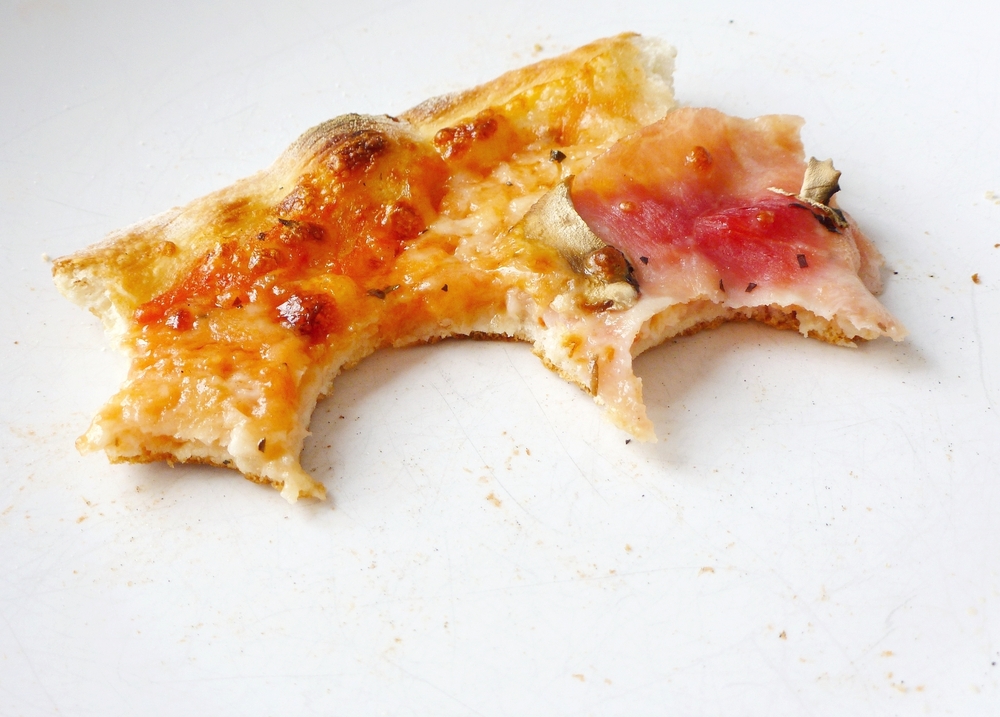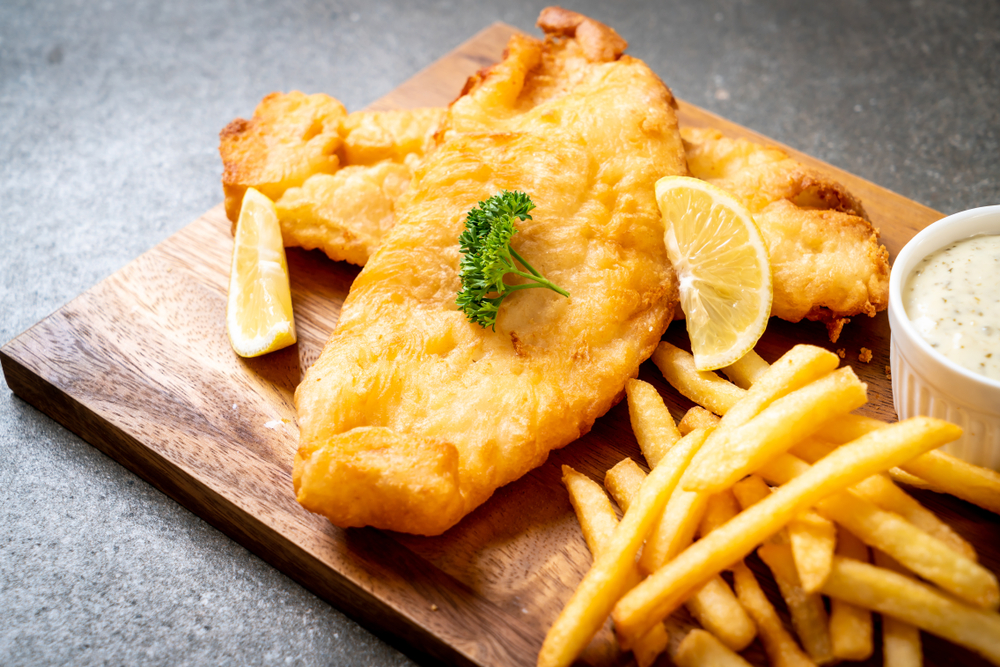Reheating Indian food can be a tricky task, especially if you want to preserve its texture and flavor. But fear not, with a few simple tips and tricks, you can enjoy your leftover Indian food just as much as you did on the first day.
In this article, I will share my knowledge and experience on how to reheat Indian food to ensure that it is safe to eat, delicious, and retains its original texture and flavor.
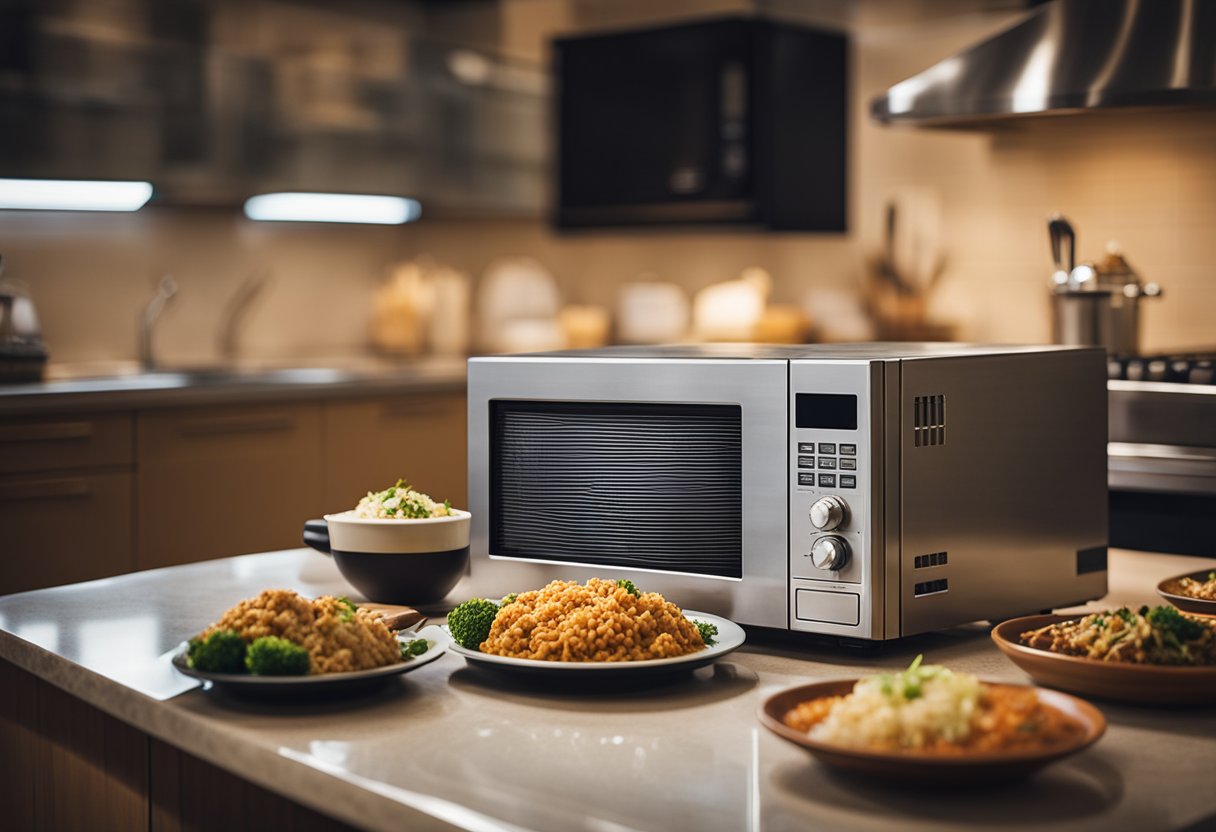
Understanding the basics of reheating Indian food is crucial to ensure that you do it safely and effectively. Indian cuisine is known for its rich flavors, spices, and sauces, and reheating it incorrectly can lead to a loss of texture and taste.
It is important to reheat Indian food at the right temperature and for the right amount of time to ensure that it is safe to eat and retains its original flavor. In the next section, I will discuss some of the methods for reheating Indian food.
Key Takeaways
- Reheating Indian food requires careful attention to temperature and time to preserve texture and flavor.
- Different methods of reheating work best for different types of Indian dishes.
- Proper storage and preparation techniques can make reheating Indian food easier and more effective.
Understanding Reheating Indian Food
As someone who loves Indian cuisine, I often find myself with leftovers that I want to reheat. However, reheating Indian food can be tricky, as not all dishes reheat well.
In this section, I will share my knowledge on how to safely and effectively reheat Indian food, including the importance of safe reheating and the different types of Indian dishes that can be reheated.
Importance of Safe Reheating
It is crucial to reheat Indian food safely to avoid any potential harmful bacteria that may have grown on the food while it was stored.
The best way to ensure safe reheating is to use a food thermometer to check the internal temperature of the food. The recommended temperature for reheating cooked food is 165°F (74°C).
When reheating Indian food, it is important to avoid undercooking or overcooking the food. Undercooking can leave harmful bacteria in the food, while overcooking can dry out the food and affect its texture.
It is also important to avoid reheating food more than once, as this can increase the risk of foodborne illness.
Different Types of Indian Dishes
Not all Indian dishes reheat well, so it is important to know which dishes can be reheated and which ones should be consumed fresh.
Generally, dishes with gravy or sauce, such as curries, can be reheated more easily than dry dishes like biryanis or fried rice.
When reheating dishes with gravy or sauce, it is important to add a little bit of water to the dish to prevent it from drying out. It is also important to stir the dish frequently while reheating to ensure even heating.
In conclusion, reheating Indian food can be done safely and effectively if done correctly. By following the recommended temperature and reheating methods, you can enjoy your favorite Indian dishes without compromising their nutritional value or flavor.
Methods for Reheating
When it comes to reheating Indian food, there are several methods to choose from. The best method for reheating depends on the type of dish you are reheating and your personal preference.
In this section, I will cover the most popular methods for reheating Indian food.
Microwaving Indian Food
Microwaving is the quickest and easiest way to reheat Indian food. To microwave Indian food, place the food in a microwave-safe container and cover it with a lid or microwave-safe plastic wrap.
To prevent the food from drying out, add a tablespoon of water or oil to the container. Microwave the food on high for 1-2 minutes, stirring halfway through.
Check the internal temperature of the food with a thermometer to ensure it is heated to at least 165°F.
Using an Oven or Toaster Oven
If you want to achieve even heating and a crispy texture, consider using an oven or toaster oven to reheat Indian food. Preheat the oven to 350°F and line a baking sheet with parchment paper. Place the food on the baking sheet and cover it with aluminum foil.
Bake for 10-15 minutes, or until the food is heated through. Remove the foil and bake for an additional 5-10 minutes to crisp up the top. Check the internal temperature of the food with a thermometer to ensure it is heated to at least 165°F.
Stovetop Reheating
Stovetop reheating is a great option for dishes that have a lot of sauce or gravy, such as curries. To reheat Indian food on the stovetop, place the food in a skillet or saucepan and add a tablespoon of water or oil.
Cover the skillet or saucepan with a lid and heat the food on low heat, stirring occasionally. Check the internal temperature of the food with a thermometer to ensure it is heated to at least 165°F.
Reheating with an Air Fryer
If you want to achieve a crispy texture without using oil, consider reheating Indian food with an air fryer. Preheat the air fryer to 350°F and place the food in the basket. Heat the food for 5-10 minutes, or until it is heated through and crispy.
Check the internal temperature of the food with a thermometer to ensure it is heated to at least 165°F.
Overall, reheating Indian food is easy and can be done using a variety of methods. Whether you prefer microwaving, using an oven or toaster oven, stovetop reheating, or reheating with an air fryer, the key is to ensure that the food is heated through to an internal temperature of at least 165°F.
Preserving Texture and Flavor
When reheating Indian food, it is important to preserve its texture and flavor. Here are some tips that will help you maintain the taste, texture, and moisture of your food.
Maintaining Moisture
Moisture is the key to preserving the texture and flavor of Indian food. To maintain the moisture level, you can add a little bit of water or oil to the dish before reheating it. You can also cover the dish with a damp paper towel to prevent it from drying out.
When reheating rice, add a tablespoon of water to the container and spread it evenly to avoid soggy rice. Also, avoid clumpy rice by using a fork to gently break it apart and even it out in the container.
Avoiding Overheating
Overheating can lead to dryness and loss of flavor in Indian food. To avoid overheating, use a microwave or stovetop and heat the food in short intervals, stirring occasionally.
If using a stovetop, use a little bit of oil or water to prevent the food from sticking to the pan and reheat it on low heat. Avoid overheating the food, as it can cause the flavors and spices to break down.
Enhancing Crispiness
Crispy texture is an important aspect of Indian food. To enhance the crispiness, use an oven or a toaster oven instead of a microwave or stovetop. This will help you achieve a crispy texture without making the food dry.
You can also sprinkle a little bit of water on the food before reheating it in the oven to create steam, which will help preserve the moisture and enhance the flavors.
By following these tips, you can easily preserve the texture and flavor of your Indian food while reheating it.
Tips for Specific Indian Foods
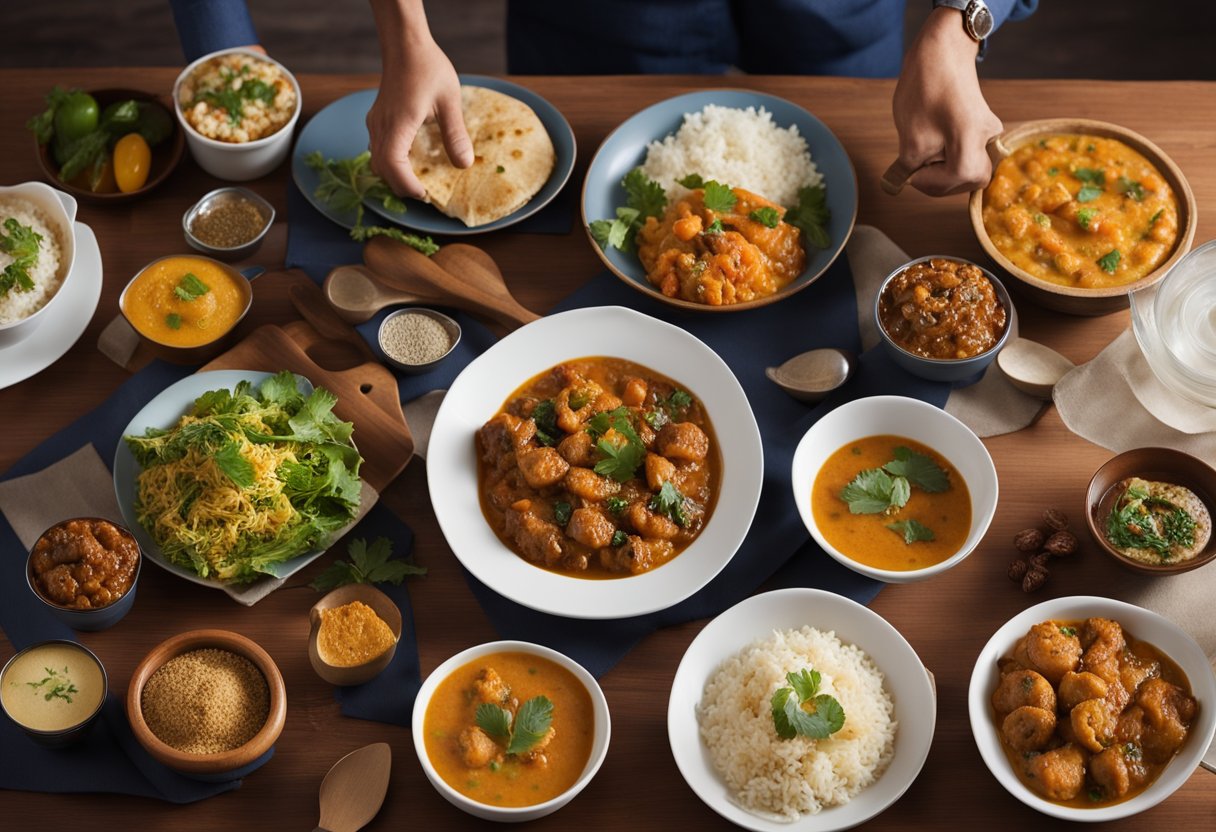
Reheating Rice and Biryani
Rice and biryani are staple Indian dishes that can be easily reheated. To prevent dryness, add a tablespoon of water to the container before reheating. Use a fork to break any clumps of rice and spread it evenly in the container.
Cover the container with a lid or a damp paper towel and microwave for 1-2 minutes. Alternatively, you can reheat rice and biryani in a pan on low heat with a little bit of oil or water.
Best Practices for Curries and Saucy Dishes
Curries and saucy dishes are best reheated on the stovetop. Add a little bit of water or coconut milk to the curry to prevent it from sticking to the pan. Reheat on low heat and stir occasionally until the curry is heated through.
If you’re reheating leftover tandoori chicken or paneer, add it to the curry towards the end of the reheating process to prevent it from becoming too dry.
Handling Indian Breads and Fried Snacks
Indian breads like naan, paratha, and bhaji can be reheated in a pan or in the oven. Brush the bread with a little bit of butter or ghee before reheating to prevent it from becoming too dry.
Fried snacks like samosas and pakoras can be reheated in the oven at 350°F for 5-7 minutes or until they are heated through and crispy.
Remember to always reheat your Indian food thoroughly before consuming. Enjoy your delicious leftovers!
Storage and Preparation for Reheating
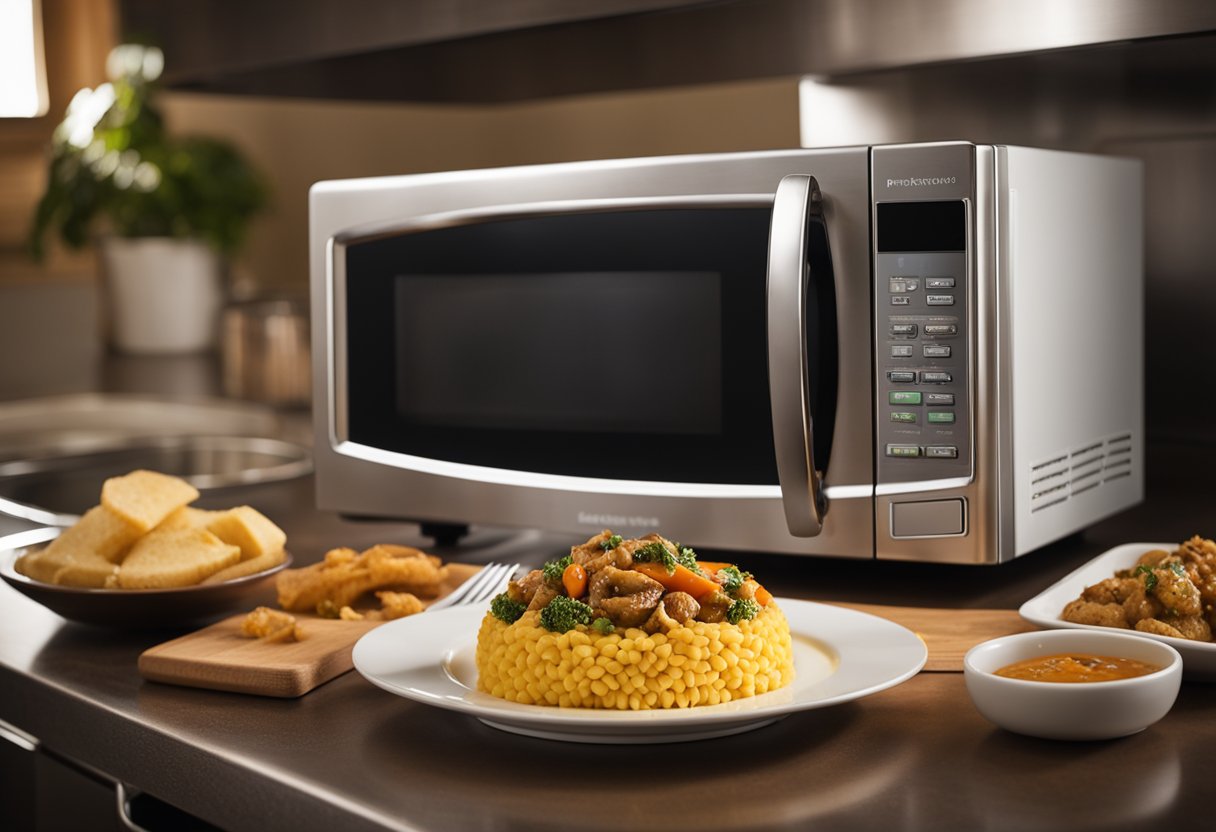
When it comes to reheating Indian food, proper storage and preparation are crucial to ensure that the food remains safe to eat and retains its flavor and texture. In this section, I will cover the best practices for cooling and storing leftovers and preparing them for reheating.
Cooling and Storing Leftovers
After serving your Indian meal, it is important to cool the leftovers as quickly as possible to prevent bacterial growth. I recommend refrigerating your leftovers within two hours of cooking.
To do this, transfer the food to airtight containers or wrap them in aluminum foil before placing them in the fridge. This will help to prevent the food from drying out and absorbing any unwanted flavors from other foods in the fridge.
If you plan on reheating your leftovers in the microwave, make sure to use microwave-safe dishes. Avoid using plastic containers or wrapping the food in plastic wrap, as this can release harmful chemicals into the food when heated.
Preparation Before Reheating
Before reheating your Indian food, it is important to let it come to room temperature. This will help to ensure that the food heats evenly and prevents the outside from becoming overcooked while the inside remains cold.
If you are in a rush and need to reheat your food quickly, you can use the hob to warm up the food. Simply add a small amount of stock or water to the pan and heat the food over low heat, stirring occasionally.
When reheating your Indian food, it is important to do so in short intervals to prevent it from becoming overcooked or dried out.
I recommend reheating the food in 30-second intervals, stirring or flipping the food in between each interval. This will help to ensure that the food heats evenly and retains its moisture.
If you are reheating a dish with a sauce or chutney, you may need to add a small amount of water or stock to the dish to prevent it from drying out. Be sure to check the consistency of the dish as it heats up and adjust the seasoning as needed.
By following these tips for storage and preparation, you can ensure that your Indian leftovers are safe to eat and taste just as delicious as they did when they were first served.
Frequently Asked Questions
What is the best method to reheat rice to maintain its texture?
The best method to reheat rice is to use a microwave or a steamer. To use a microwave, add a little water to the rice and cover it with a damp paper towel. Microwave for 1-2 minutes on high, or until heated through.
Alternatively, you can use a steamer to reheat the rice. Place the rice in a heatproof bowl and place it in the steamer basket. Steam for 5-7 minutes, or until heated through.
Can you safely reheat rice from an Indian takeaway?
Yes, you can safely reheat rice from an Indian takeaway. However, it is important to store the rice properly in the fridge and reheat it to a safe temperature of 75°C. To reheat the rice, use a microwave or a steamer as described above.
What are the steps to reheat curry on the stove without losing flavor?
To reheat curry on the stove without losing flavor, start by heating a small amount of oil in a pan over medium heat. Add the leftover curry and stir occasionally until heated thoroughly.
If the curry is too thick, you can add a little water or coconut milk to thin it out. Be sure to taste the curry and adjust the seasoning as needed.
How do you effectively reheat naan bread to keep it soft?
To effectively reheat naan bread, wrap it in a damp paper towel and microwave for 10-15 seconds on high. Alternatively, you can wrap the naan in foil and place it in a preheated oven at 350°F for 5-10 minutes.
Is it possible to reheat Indian food for a large group, and how?
Yes, it is possible to reheat Indian food for a large group. The best way to do this is to use a slow cooker or a chafing dish.
Simply place the leftover food in the slow cooker or chafing dish and heat on low until heated through. Be sure to stir occasionally to prevent burning.
How can you determine if leftover Indian food is still safe to eat?
To determine if leftover Indian food is still safe to eat, use your senses. Look for any signs of mold or discoloration. Smell the food to see if it has an off odor.
Taste a small amount to see if it tastes sour or off. If the food looks, smells, or tastes off, it is best to discard it.






